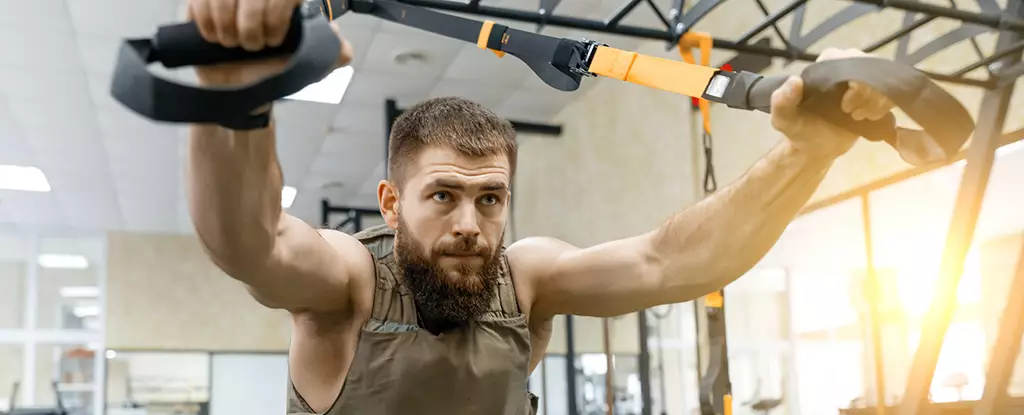Weighted vests have recently surged in popularity, particularly among fitness enthusiasts and professionals who advocate their use on social media platforms. Though the concept of exercising with added weight isn’t new—historically employed by soldiers carrying heavy packs during extended hikes—modern weighted vests have evolved significantly. They now feature adjustable designs that optimize comfort and usability. However, before jumping into this trend, it’s crucial to evaluate whether these vests are right for you and what implications their use might have on your fitness journey.
A landmark study in 1993 marked the early exploration into the benefits of weighted vests, following a group of 36 older adults over 20 weeks. Their findings highlighted improvements in bone health, diminished pain, and enhanced physical functionality—critical factors for an aging population. Since then, the dialogue surrounding the physiological effects of weighted vest training has expanded. Numerous studies have shown that wearing a weighted vest significantly amplifies the body’s physiological stress during exercise. Metrics like oxygen uptake, heart rate, and energy expenditure are elevated, suggesting that the body effectively works harder when wearing additional weight.
However, the effectiveness of various weight increments raises questions. Research indicates that while additional weight can be beneficial, adding just 5% extra weight may not provide enough of a challenge compared to exercising with body weight alone. This inconsistency implies a threshold exists, beyond which the benefits may plateau—a consideration that should inform anyone tempted to maximize their weight load.
It’s equally important to consider the biomechanics of wearing a weighted vest during exercise. A 2021 study examined the impact of adding weight during walking and running, concluding that while the physiological demands increased, the natural running motion remained largely unaffected. Such findings are promising, especially for those concerned about potential injuries. Notably, there have been no substantial research findings linking increased injury risk to recreational use of weighted vests. Yet caution is warranted; a 2018 clinical study focused on individuals with obesity identified a significant incidence of back pain associated with vest use. Thus, while weighted vests can be a powerful tool for enhancing fitness, they may not suit everyone.
If you are experiencing discomfort while training with a vest, it’s essential to listen to your body—reducing the weight or discontinuing its use may be necessary to avoid further complications.
Although weighted vests can boost energy expenditure during aerobic and resistance training, the evidence supporting their role in facilitating long-term fat loss or muscle retention is mixed. For instance, an earlier study indicated promising results in weight loss and muscle gain among postmenopausal women who integrated light weighted vests into their walking routines. Conversely, subsequent research failed to replicate these findings among obese older adults despite prolonged use of vests throughout daily activities. This discrepancy highlights the variability in individual responses, suggesting that weighted vests should not be viewed as a universal solution for fat loss.
The discourse around using weighted vests for bolstering bone health, particularly among older adults, is also complex. A notable study from 2003 found significant improvements in bone density among older women who integrated weighted vest walking into their routines. However, contrasting findings from a later study revealed no substantial differences in bone metabolism between those who wore vests and those who did not. This prompts further inquiry into the nuanced effects of weighted vs. unweighted training on skeletal health.
For those contemplating integrating weighted vests into their training regimen, progression is paramount. If you’re new to exercise, the focus should first be on establishing a robust foundation of general fitness before complicating matters with additional weight. Once a solid base of strength and endurance is achieved, phase-in a weighted vest, starting with no more than 5% of your body weight and gradually escalating toward a maximum of 10%.
It’s beneficial to adjust your training program to ensure a balance between higher loads and controlled repetitions, particularly when performing resistance exercises. However, while weighted vest training can add variety to your regimen, it may be more practical to utilize traditional weights such as dumbbells or kettlebells for strength training.
While weighted vests can undoubtedly increase the intensity of workouts and contribute to energy expenditure, they should be approached thoughtfully. Their integration may offer specific advantages—particularly in improving bone health or increasing workout intensity—but adopting a holistic approach to fitness that prioritizes progressively building strength and endurance may yield similar or even superior results. Ultimately, carefully assessing individual goals, fitness levels, and existing injuries will ensure that weighted vest training is both effective and safe.


Leave a Reply